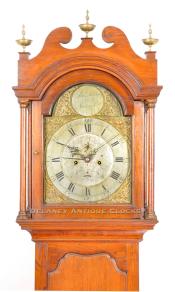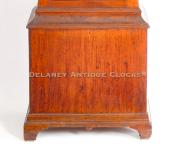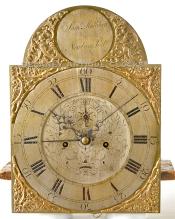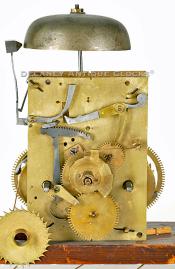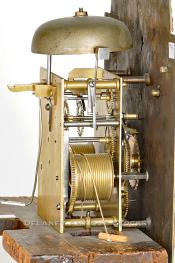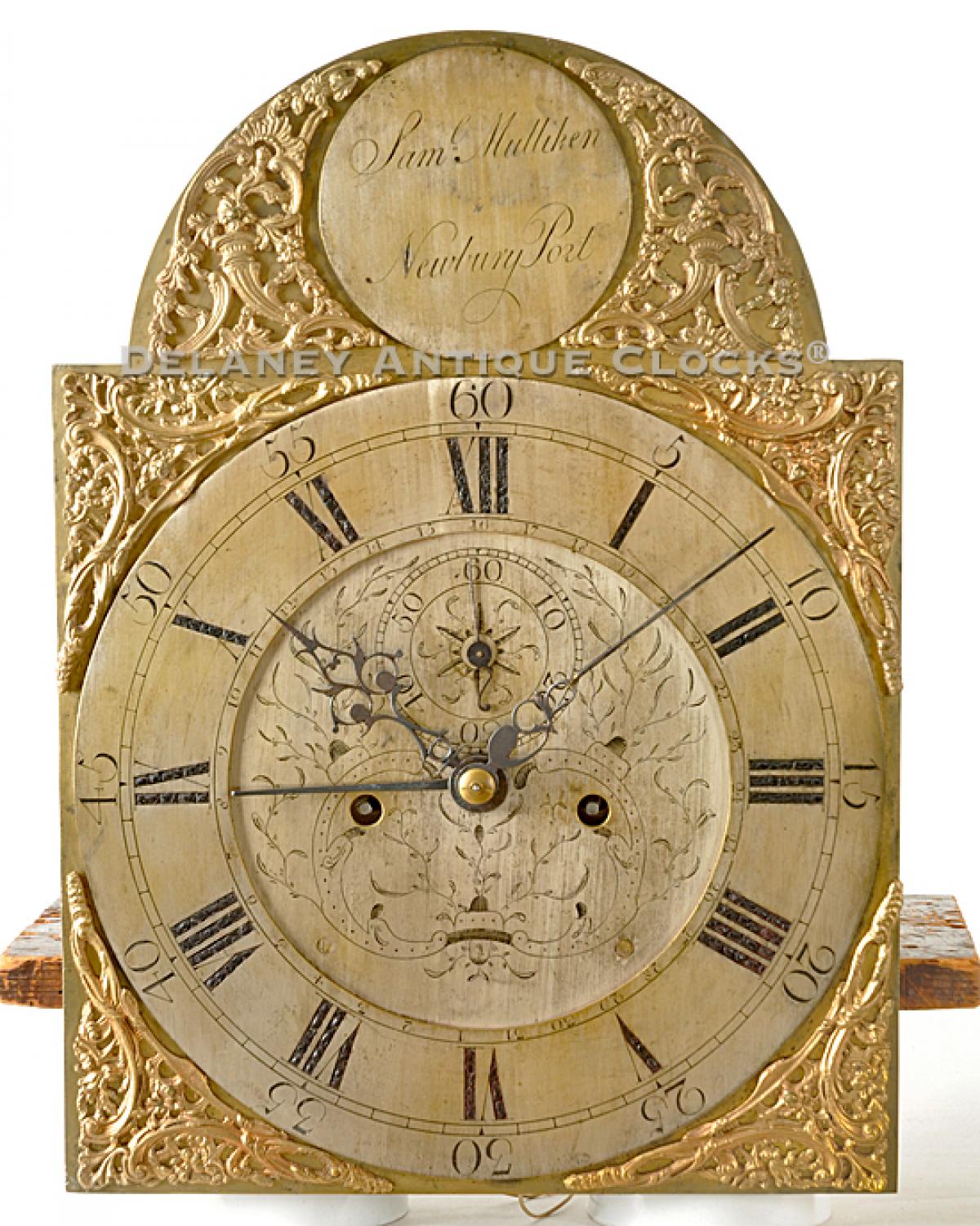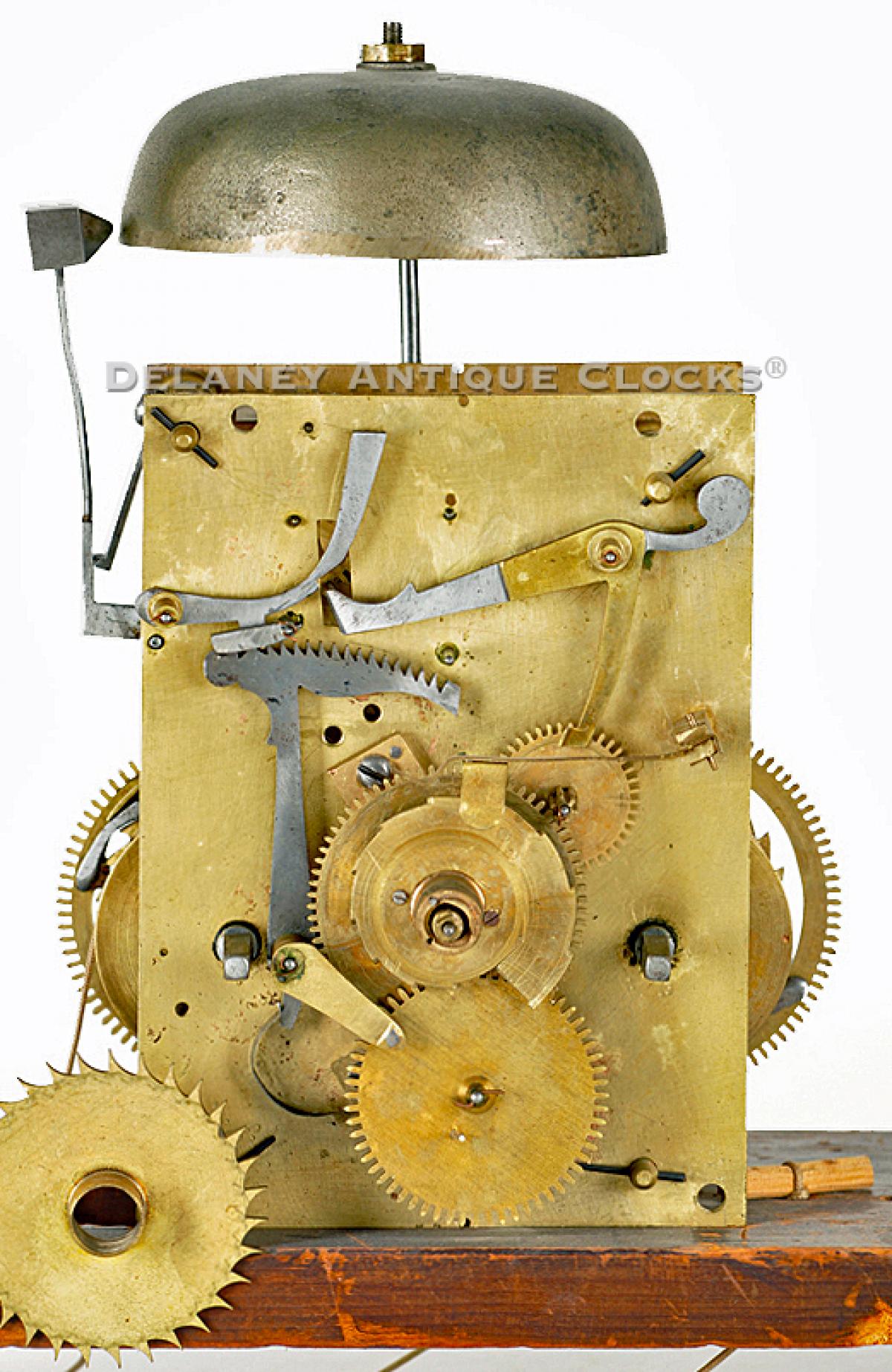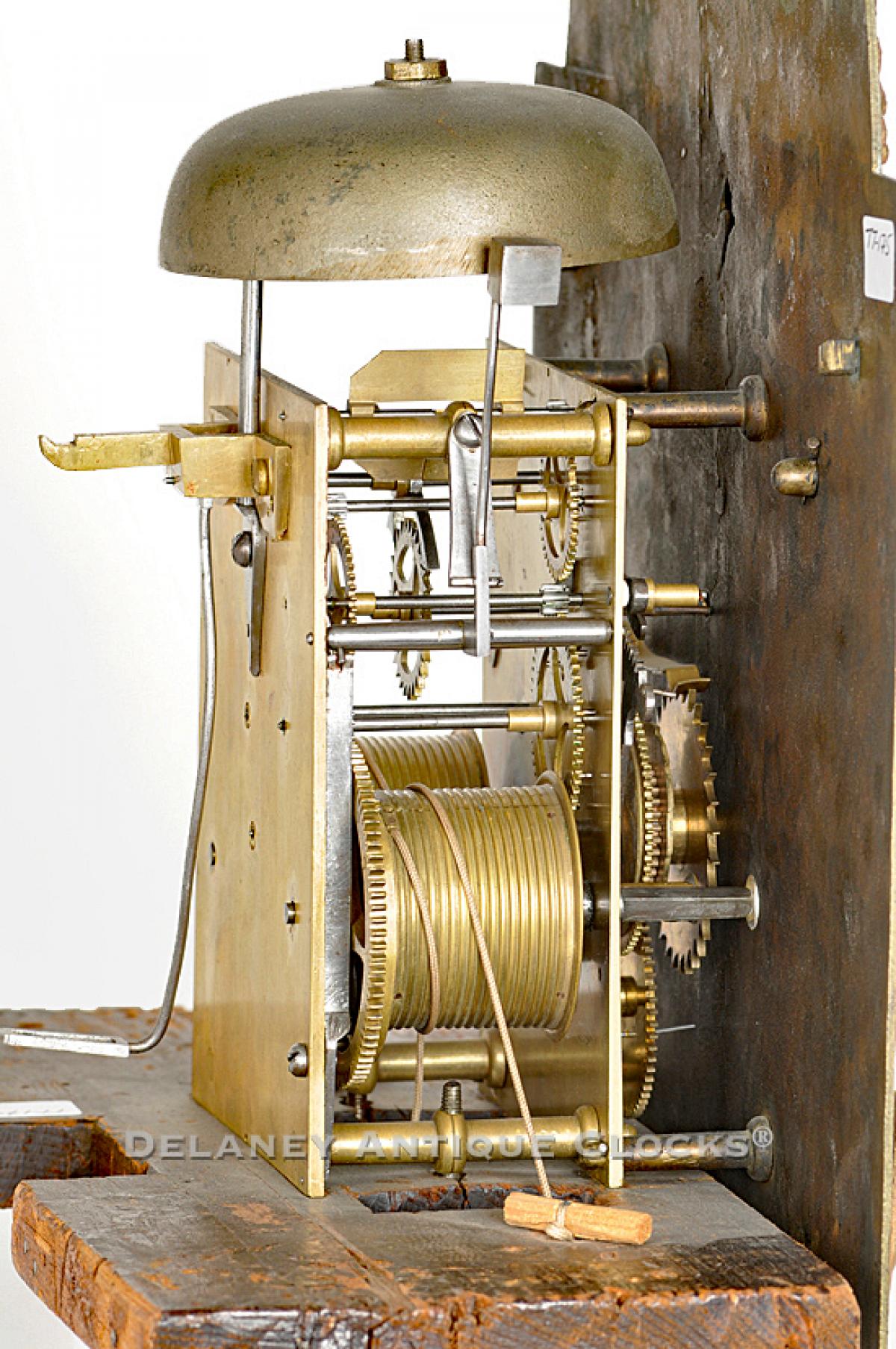Samuel Mulliken (1761-1847) Newburyport, MA. A butternut case tall clock. TT-175.
This butternut case tall clock was made by Samuel Mulliken in Newburyport, Massachusetts.
This unusual example features an unusual case form found occasionally in this region of New England. Another example that comes to mind is a tall case clock made by John Foss in Somersworth, New Hampshire, that we own. The presentation is very similar. This case discussed here is constructed in butternut and retains an older surface. The mellow color is quite desirable. The case is supported by an applied bracket molding to the bottom of the base. This molding also forms the feet as it is cut open from the bottom. An interesting detail is the small drop in the center of the overall design. The base section is somewhat compressed in relation to the long waist section and the boldly formatted hood. This is the tradition of the early New England case forms. The waist section is long and is formed, not having quarter columns which become more commonly found in later case designs. The large waist door is nicely shaped at the top and is trimmed along its perimeter with a molded edge. Access to the interior of the case is granted through this door. Behind the door are the two lead weights and the brass-faced pendulum. The molded arched bonnet or hood features an unusual crest. It is finished with a swan's neck pediment. The arches are heavily formed. Three cast brass wine cup finials decorate the top. It is evident on close inspection that the arch molding is hand carved. Four fully turned bonnet columns visually support this design element. All four are smoothly turned. These terminate at each end in wooden turned capitals. Wide tombstone-shaped side lights are cut into the side of the bonnet. These openings are fitted with glass and provide visual access to the movement. The bonnet door is arched in form and also fitted with glass. It opens to access the composite brass dial.
This style of dial predates the painted dial form. It is composed of a brass sheet and is decorated with six applied matching cast brass Rococo style spandrels, a centrally fitted name boss in the arch, an engraved time or chapter ring, an engraved seconds register, an aperture for the calendar day, and a decoratively engraved center. The maker signs this dial in the name boss. The engraved decorations in the center are wonderfully executed and worth pointing out. The engraved time ring retains a subtle silver cast. Please note the wonderful shaping of the hands.
The movement is constructed in brass and is weight driven. It is designed to run eight days on a full wind and strike each hour on a cast iron bell. The striking system features a rack and snail setup. The cast iron bell is mounted above the movement. The movement is of good quality.
This rare clock was made circa 1780. The case stands approximately 85.5 inches tall (7 feet 1.5 inches) to the top of the center finial. The bonnet is 20 inches wide and 9.5 inches deep.
Inventory number TT-175.
Samuel Mulliken II was born in Haverhill, Massachusetts, the son of mariner John Mulliken, a Captain in the state militia during the American Revolution, and Susanna Huse (1735-1820) on September 22, 1761. He is a member of a very important family of American Clockmakers. Samuel was apprenticed as a clockmaker and an engraver by his distant cousin Jonathan Mulliken (1740-1782) in nearby Newburyport. Samuel may have completed his apprenticeship and worked as a journeyman in Salem, only to return to Newburyport after his uncle Jonathan died in 1782. He likely took over Jonathan's shop and courted his widow, Susannah (Pearson) Mulliken. Samuel and Susannah were married a year later, on August 20, 1783. Samuel's Newburyport shop was located on State Street. Here, he continued manufacturing clocks, engraving clock dials, repairing watches, and doing light metalwork. He also developed a business relationship with the Willards from Roxbury, agreeing to sell Simon's Patented Clock Jacks. Samuel returned to Haverhill and opened his shop in 1787 through October 1788. He lost his wife Susanna in 1787 to yellow fever. By the end of November 1788, Samuel re-established himself in Salem, MA, on the corner of Court Street. He was busy doing various tasks for his cousin through marriage, the Sanderson brothers, Elijah, and Jacob. By March of 1789, Samuel has married his second wife, Sarah Newhall, daughter of Colonel Ezra Newhall. His watch repair business begins to take off, taking over 20 watches a month to service. In 1796, he moved back to Lynn and bought property. He buys a tenement house and opens a tannery. He is still involved with making clocks and casting brass. He later became the town's postmaster in 1803. Samuel died in Lynn in 1847.
Examples of brass and white dial shelf clocks are known. One brass dial shelf clock is currently in the Peabody Essex Museum Collection in Salem, Massachusetts. A similar example to the Peabody Essex clock is pictured in "The Old Clock Book" written by N. Hudson Moore. It is pictured between pages 142 and 143 in Black and white. It is figure no. 85. In 1911, it was owned by Mrs. H. P. Brownell of Providence, Rhode Island. It is reported that she owned approximately 50 antique clocks at this time. This is one she admired, and it received special attention.


